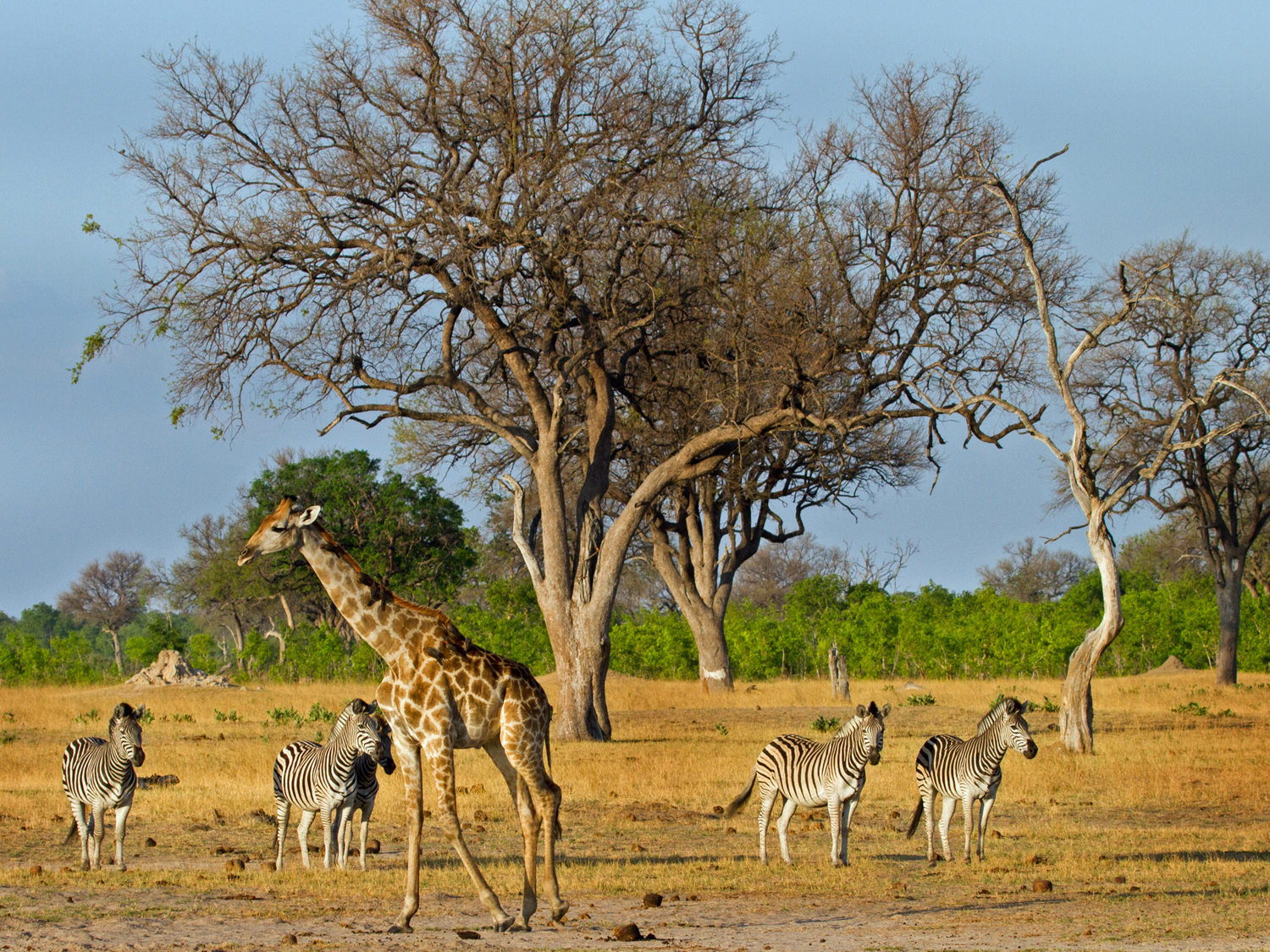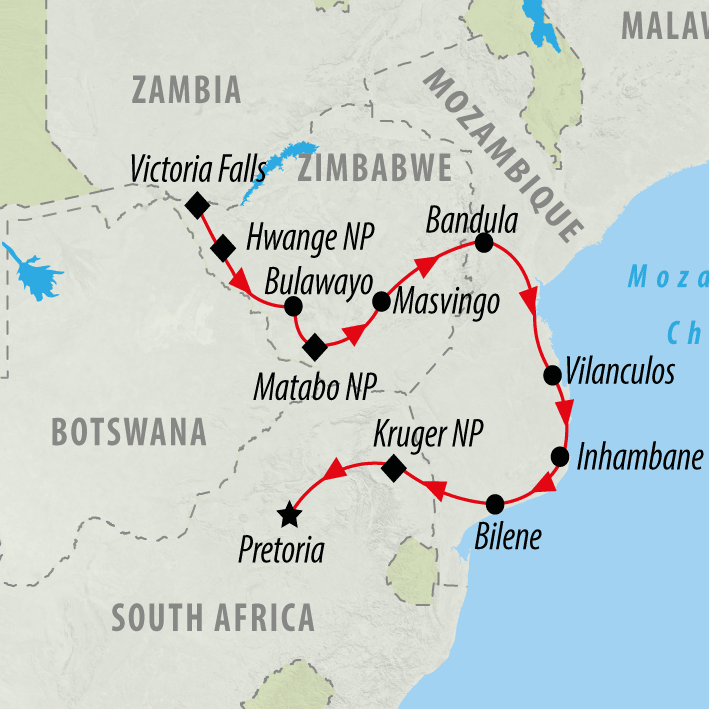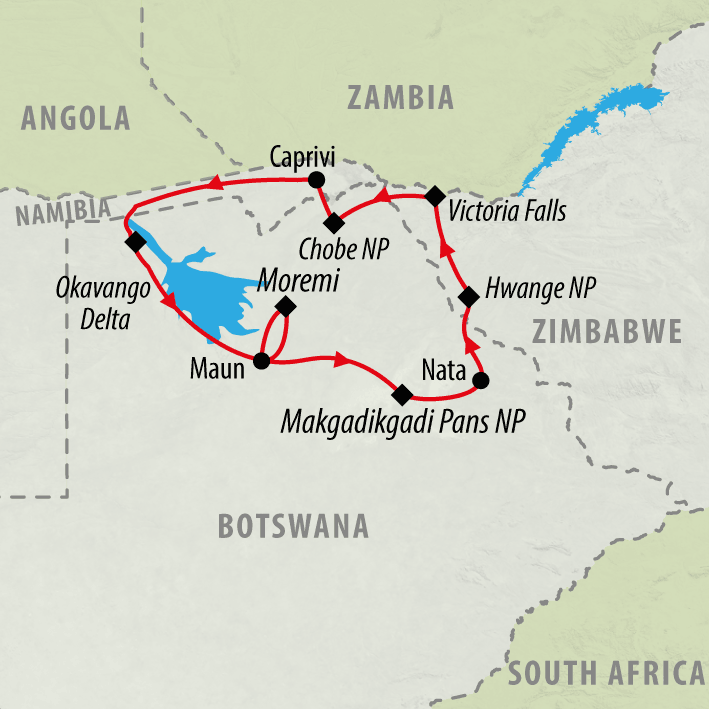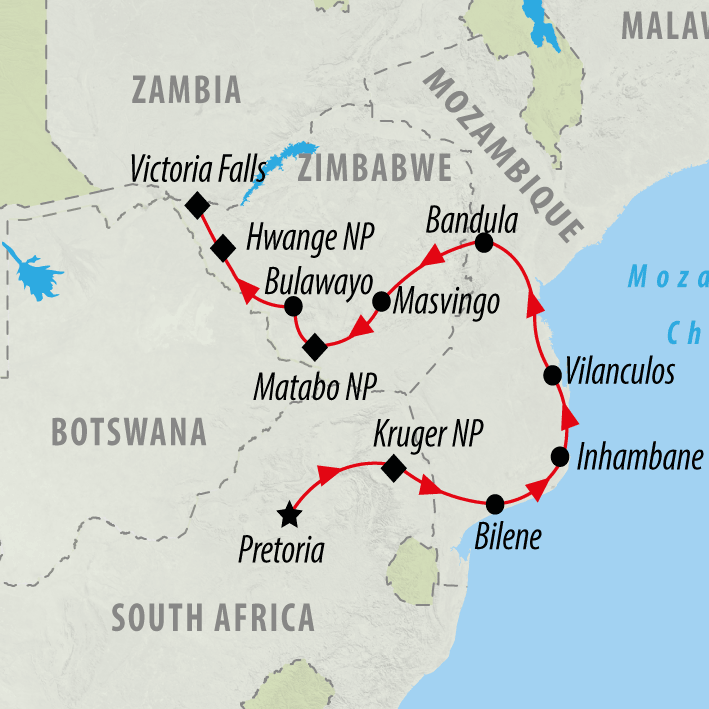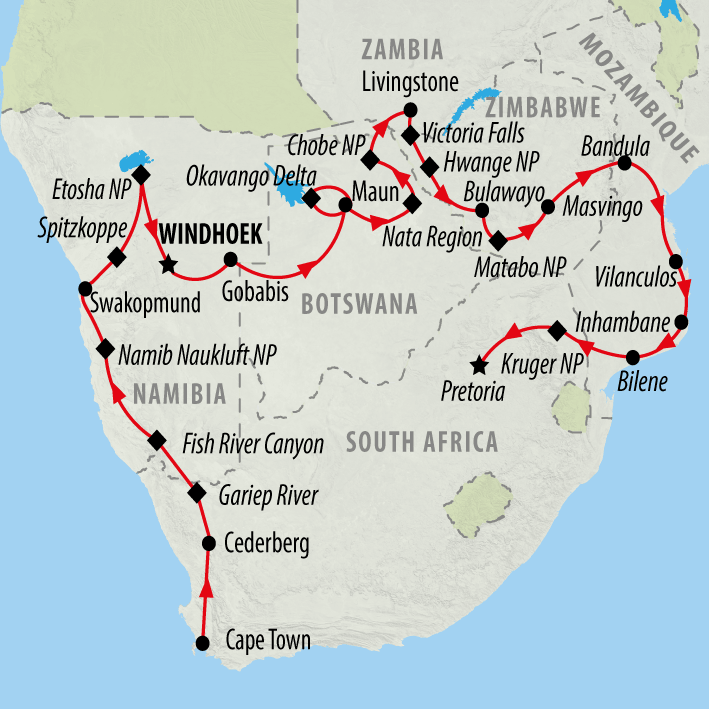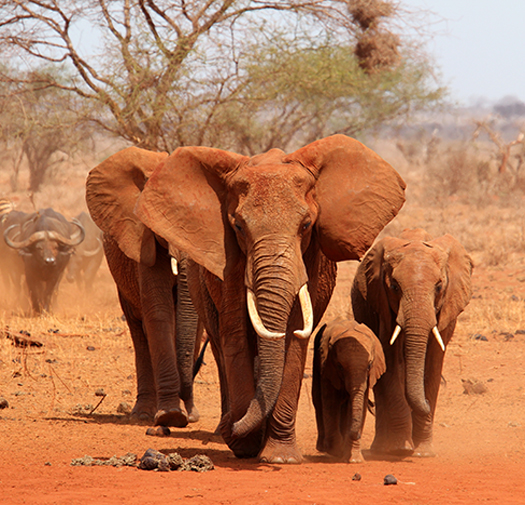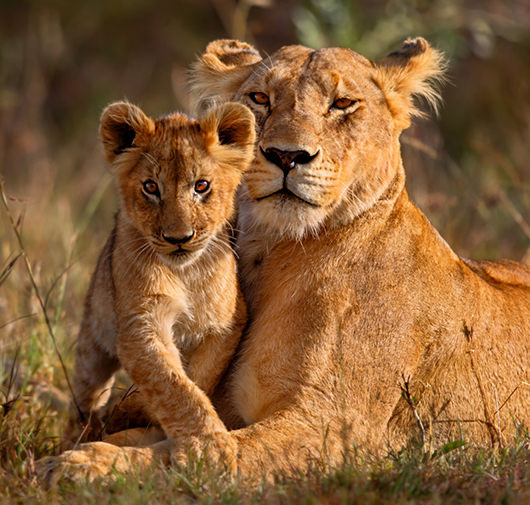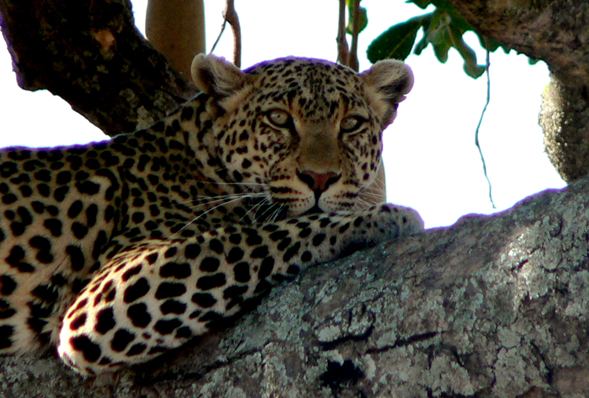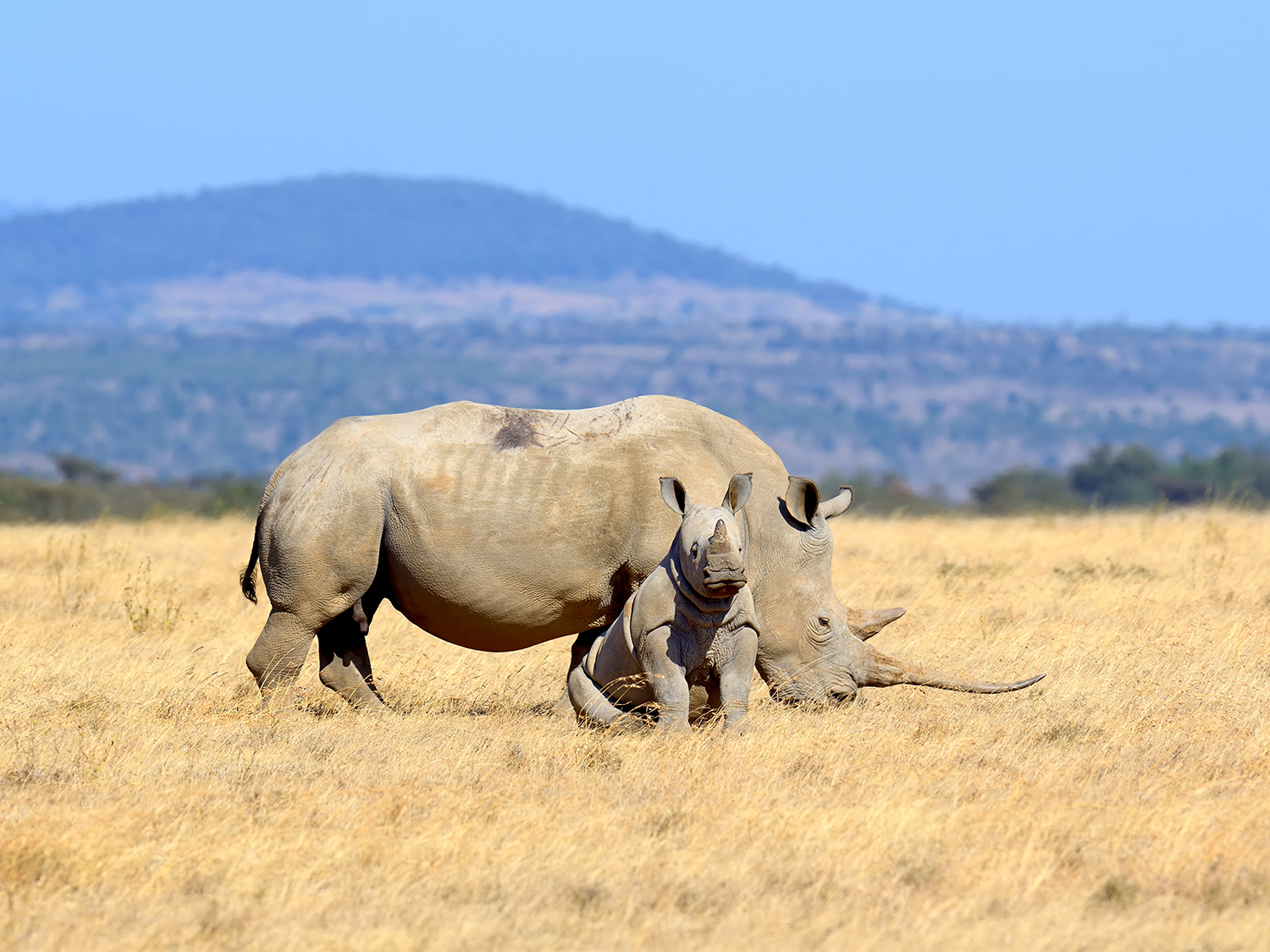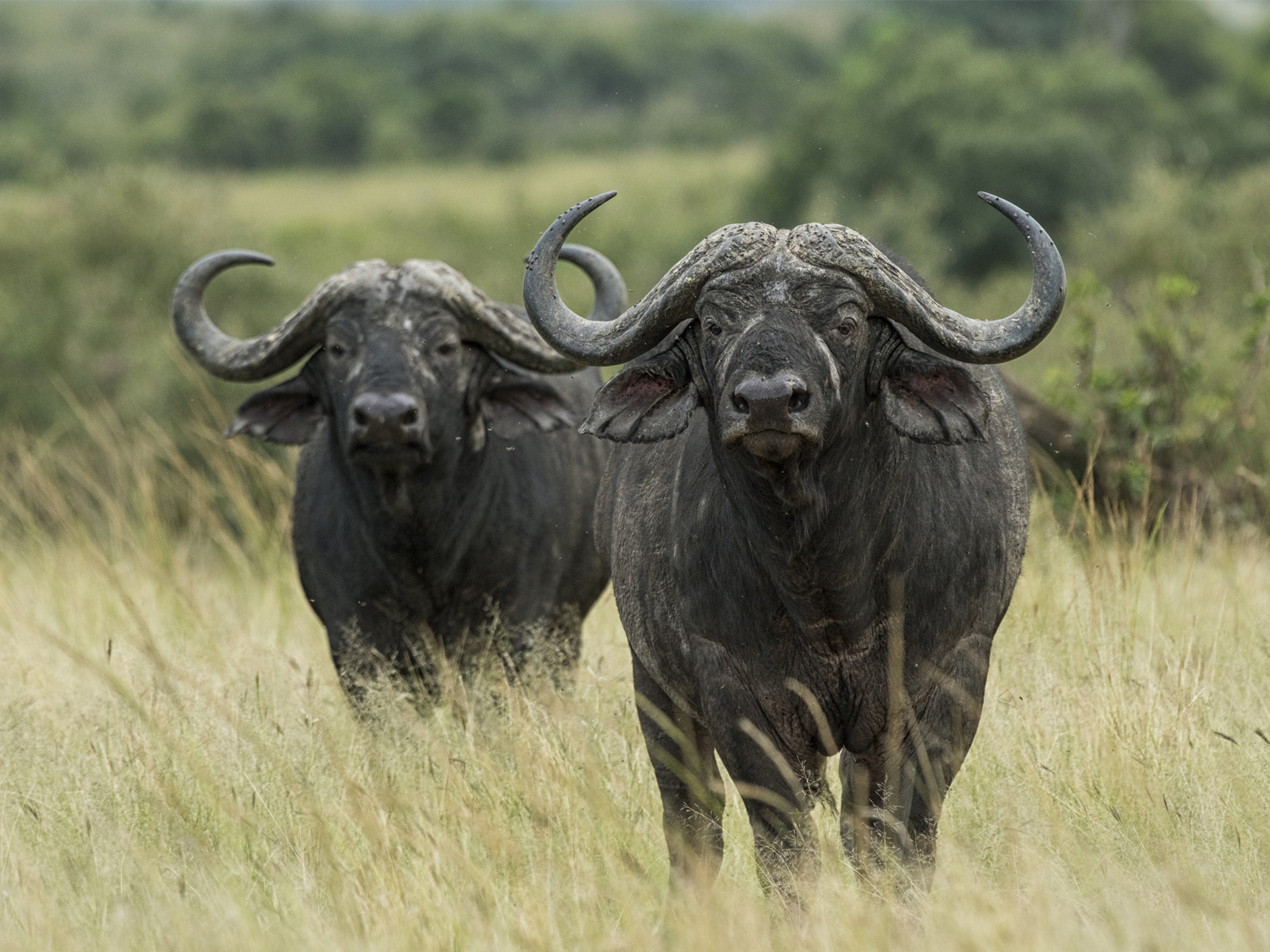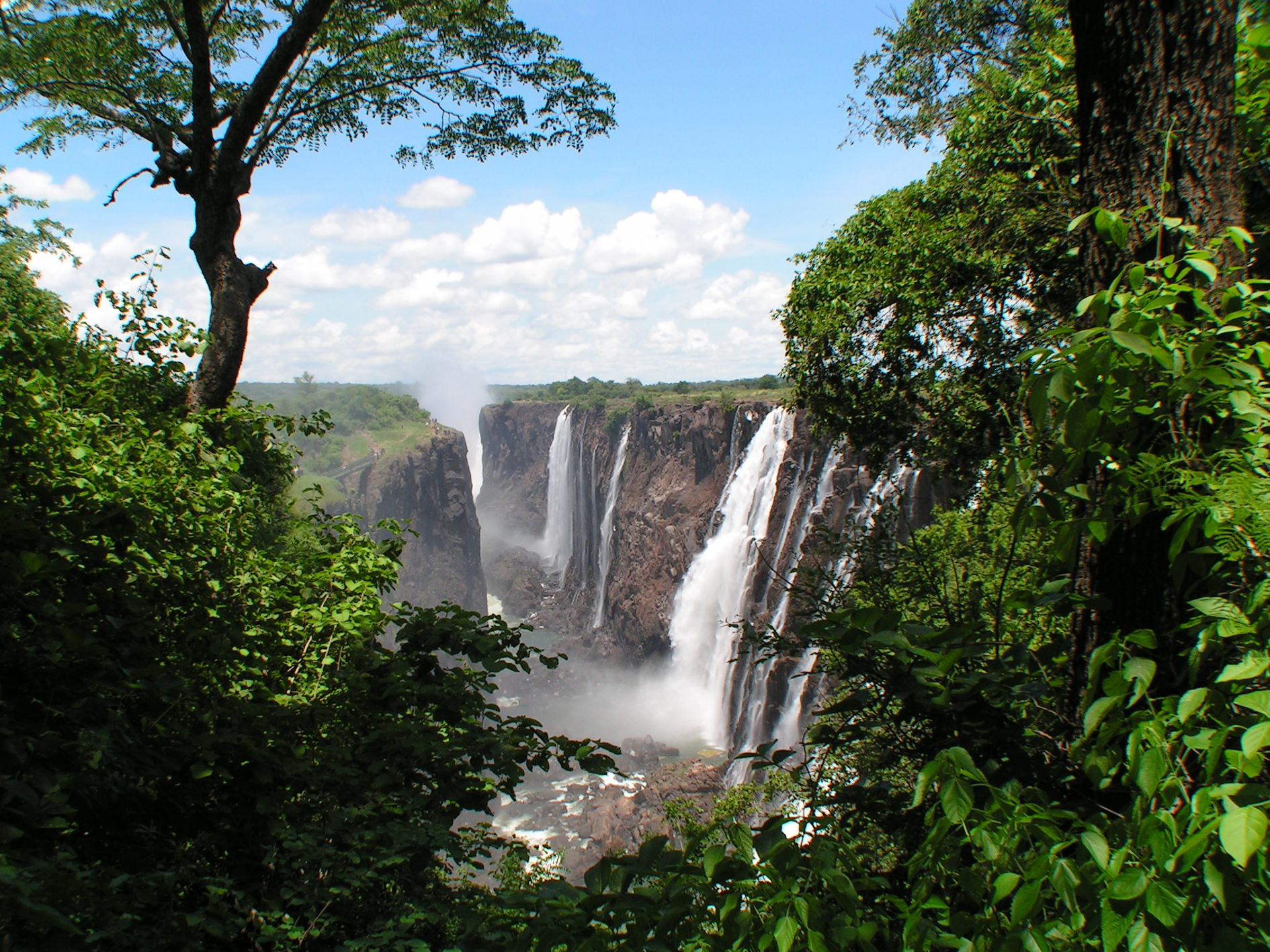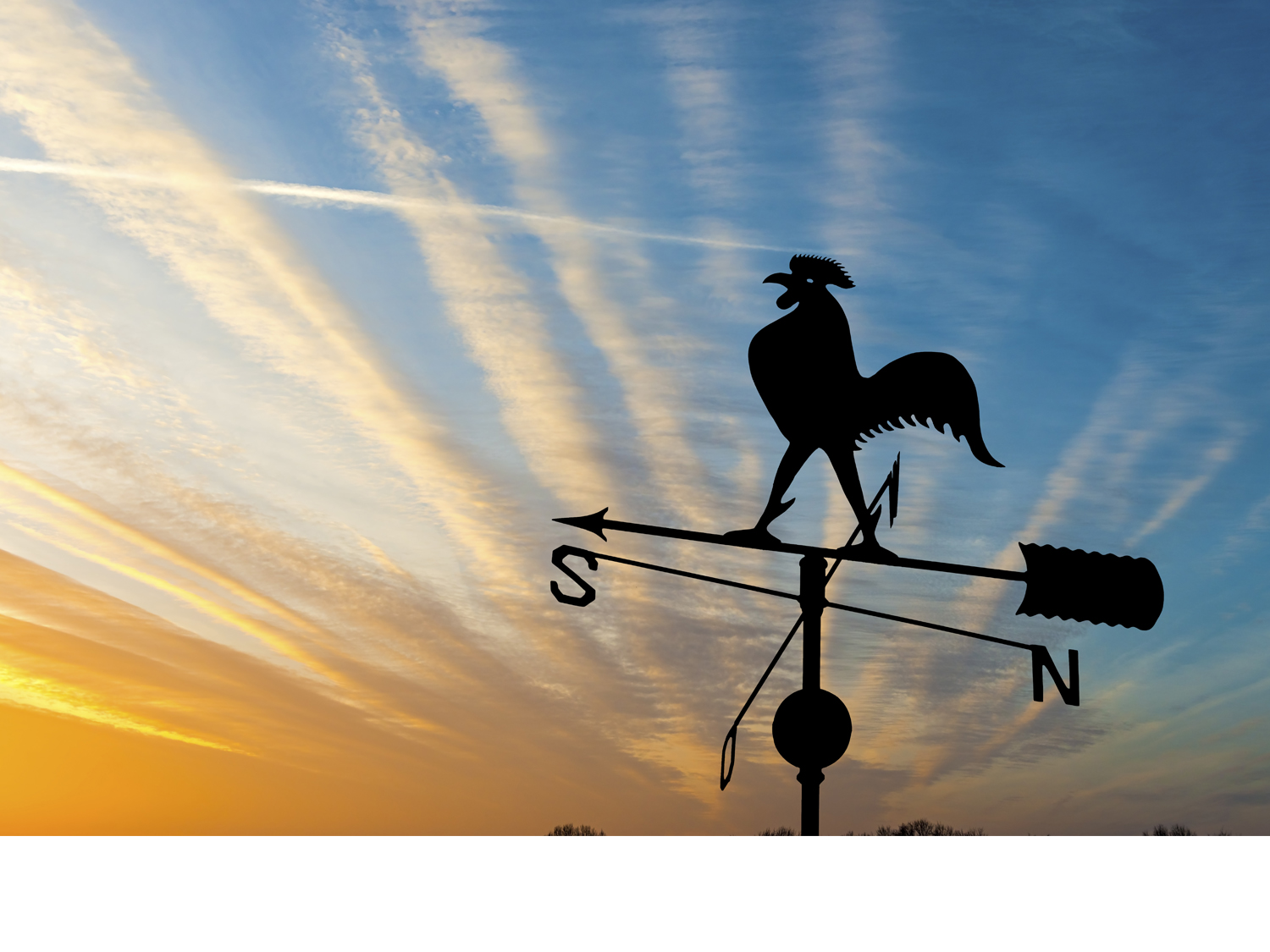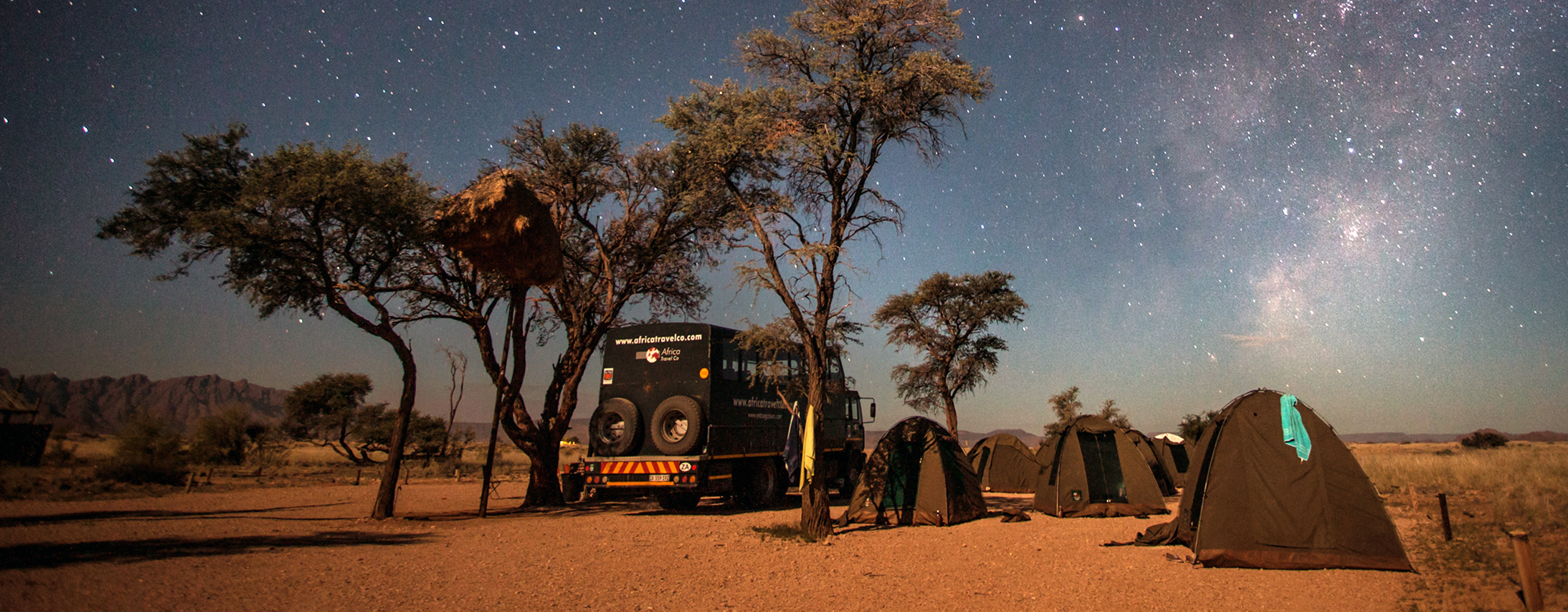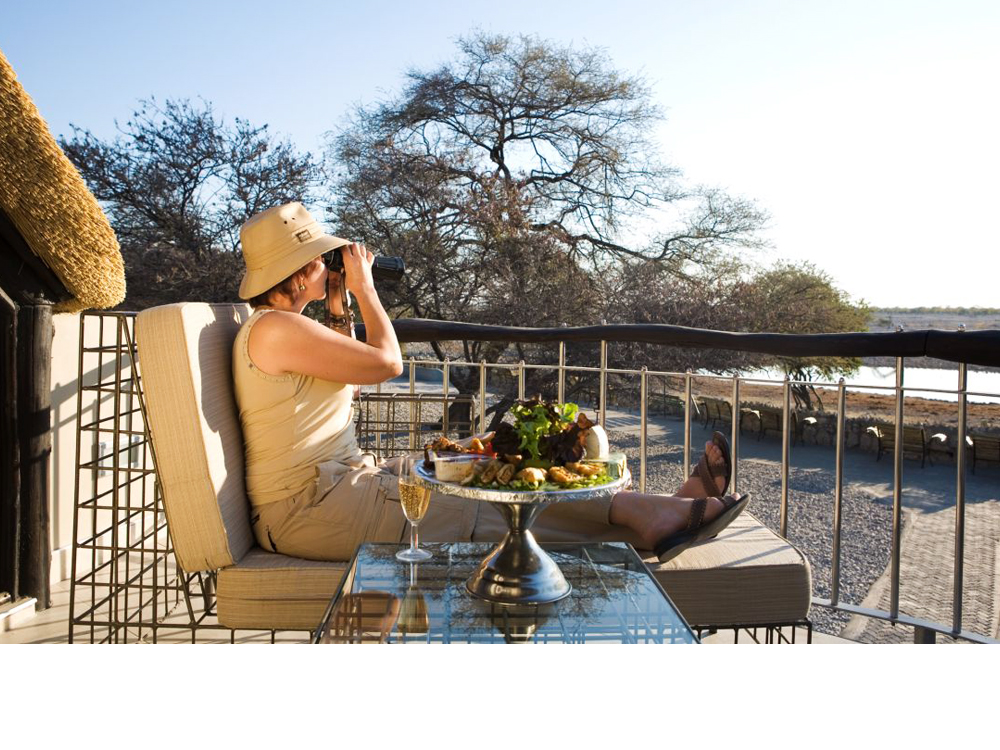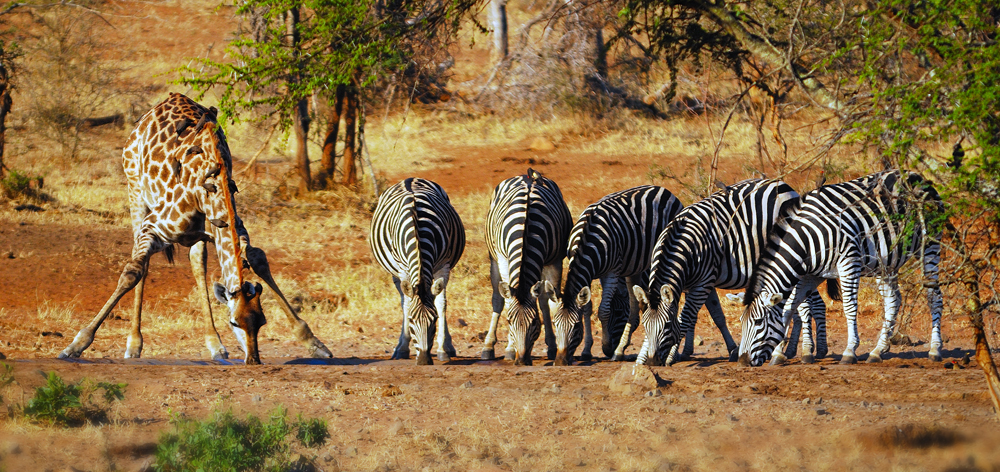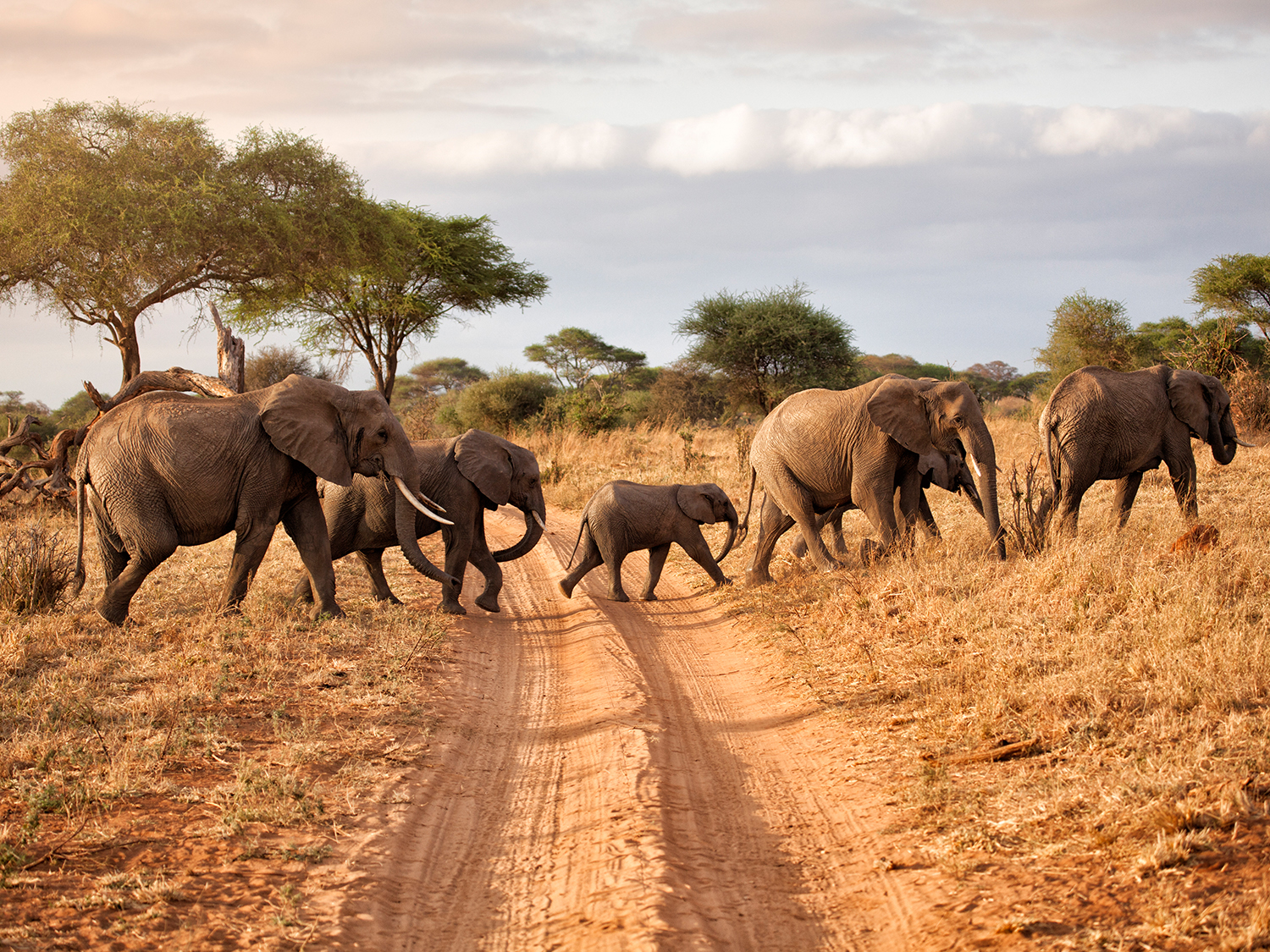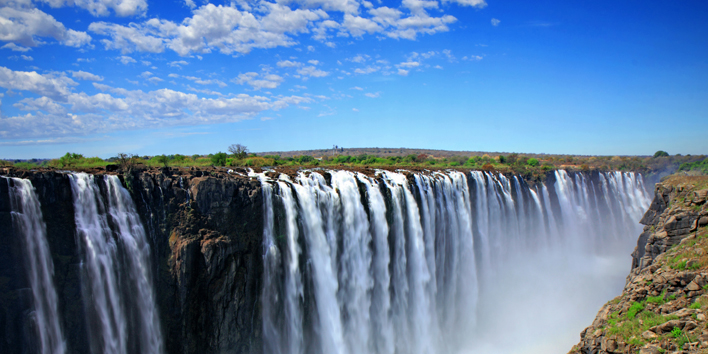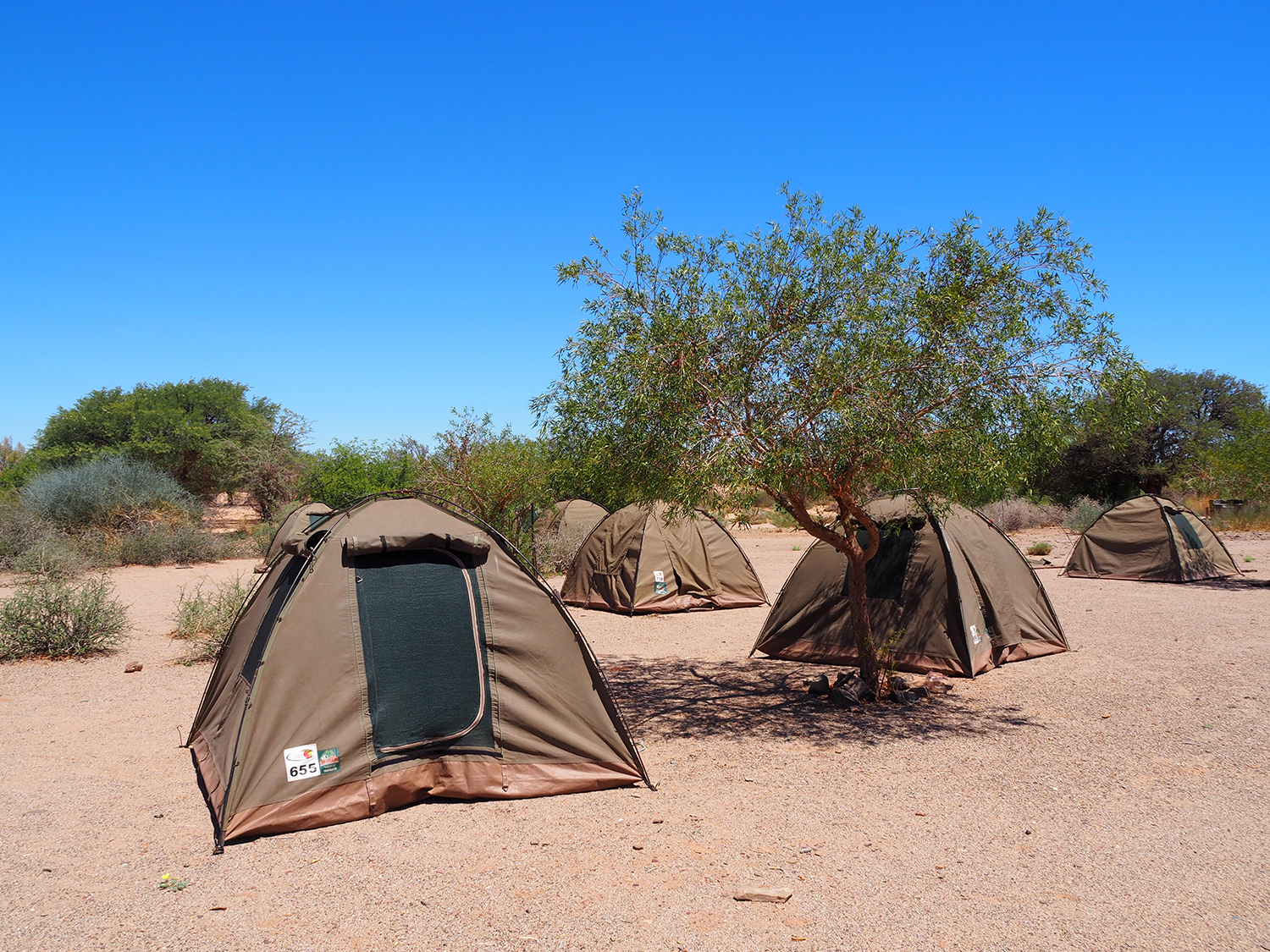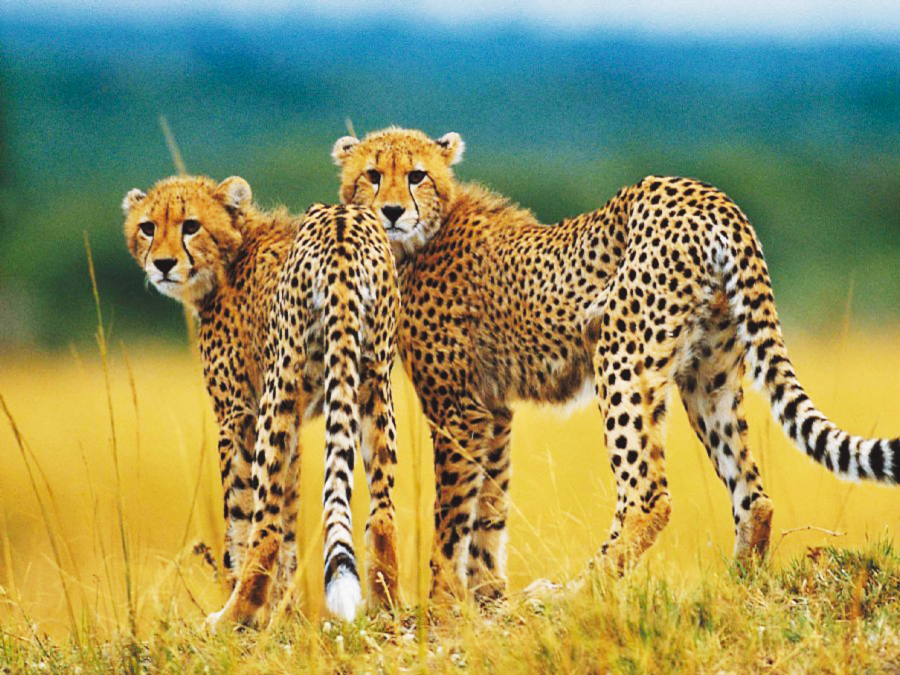Best guided tours to Hwange National ParkExplore Hwange National Park: Unforgettable Guided Safaris in Zimbabwe's Wildlife Haven
When do you want to go?
2024
I'm flexible
Passengers
Adults (18+)
Children (0 - 17)
Welcome to Hwange National Park, Zimbabwe
Spanning out over nearly 15,000 square kilometres, Hwange National Park is Zimbabwe’s biggest national park and a hub of life and activity. Given the immense size of the area, the topography is incredibly varied throughout the park, changing according to the season. From dry savannah bush to granite hills to lush, green valleys and hills, the scenery of Hwange National Park is unrivalled in the country. Of course, the entire landscape changes when the rains stop. Cracked, dry salt pans pepper the ground, and the vegetation shrivels and wilts, making the park look like a completely different place.
While the Hwange National Park has hundreds of different creatures that dwell within its boundaries, the most prominent animal, and perhaps biggest pull for visitors, is the elephant. Tens of thousands of these majestic beasts roam freely through the reserve, making up one of the largest elephant populations in the world. Other creatures that call this park home are leopards, rhinos, lions, and buffalo, just to name a few, all of which can be seen in abundance.
In addition to the large mammals that can be spotted in the park, there are also around 400 different species of birds, speckling the skies with their graceful formations. There are a number of different camps throughout the park, all of which offer safari drives to get up close and personal with the indigenous wildlife here. There is also the option to take part in a night drive, a once in a lifetime experience and a must for all nature-lovers.
Guided tours to Hwange National Park
Guide tours to Hwange National Park offer an immersive and education experience, allowing visitors to explore the park’s diverse landscapes and rich wildlife under the expert guidance of knowledgeable rangers. These tours provide safe and organised access to some of the park’s most remote and wildlife-rich areas, enhancing the chances of spotting the Big Five and other iconic species. Whether on a game drive, walking safari, or night excursion, guides share insights into the park’s ecology, animal behaviour, and conservation efforts, making the experience not just about observations but also about understanding the intricate balance of life in this vast wilderness. With options ranging from luxury lodges to more rustic accommodations, guided tours cater to different preferences, ensuring a memorable adventure in one of Africa’s premier wildlife destinations.
What to expect when visiting Hwange National Park?
Geography and Landscape
Hwange National Park is situated on the edge of the Kalahari Desert, giving it a unique landscape that ranges from dry, semi-arid regions to lush, wooded areas. The park’s topography includes savannas, teak forests, acacia woodlands, and grassy plains, creating a variety of habitats for its abundant wildlife. Seasonal pans and waterholes dot the park, providing vital watering points for animals during the dry seasons.
Wildlife
Hwange is perhaps best known for its incredible wildlife, boasting one of the highest concentrations of animal in Africa. The park is home to over 100 mammal species, including Africa’s ‘Big Five’ – elephants, lions, leopards, rhinoceroses, and Cape buffaloes.
The park’s elephant population is particularly notable, with estimates of over 40,000 individuals, making it one of the largest herds in Africa. These majestic creatures are often seen in large numbers around the park’s waterholes, especially during the dry season when water becomes scarce.
Predators such as lions, leopards, and cheetahs roam Hwange, with the park supporting a healthy population of African wild dogs, one of the continent’s most endangered carnivores. The diverse array of herbivores, including zebras, giraffes, and various species of antelope, provides ample prey for these predators.
Hwange is also a haven for birdwatchers, with over 400 bird species recorded. From the large, iconic African fish eagle to the tiny and colourful bee-eaters, the park offers a remarkable variety of avian life.
Africa's Big Five
Elephant
The African elephant (Loxodonta africana) is the largest land animal on Earth, with adult males (bulls) weighing up to 6,000 kilogrammes (13,200 pounds). Elephants are known for their complex social structures, which are typically led by a matriarch, the oldest and often largest female. They have remarkable memories, which help them navigate their environment and recall the locations of water sources across vast distances. Elephants are also highly intelligent, displaying behaviours such as tool use, mourning their dead, and showing empathy. Their large ears, shaped like the African continent, help regulate their body temperature, and their tusks, made of ivory, are used for digging, lifting objects, and as a weapon.
Lion
The African lion (Panthera leo) is often called the "king of the jungle," although they actually inhabit savannas and grasslands. Lions are the only cats that live in social groups called prides, which typically consist of related females, their offspring, and a few male lions. Male lions are known for their majestic manes, which vary in color and are a sign of health and virility. Lions are apex predators, primarily hunting large herbivores like zebras, wildebeests, and buffaloes, often using cooperative hunting strategies to bring down their prey. Their roar, which can be heard up to 8 kilometers (5 miles) away, is used to communicate with pride members and establish territorial boundaries.
Leopard
The leopard (Panthera pardus) is a solitary and highly adaptable predator found in various habitats across Africa, from rainforests to deserts. Leopards are known for their strength and agility, often dragging their prey up into trees to avoid scavengers like hyenas. Their rosette-patterned coats provide excellent camouflage, making them difficult to spot in the wild. Leopards are opportunistic hunters, with a diet that includes everything from antelope to birds, fish, and even insects. They are also strong swimmers and are known to fish or hunt in water when necessary. Despite their elusive nature, leopards are widespread, though their populations are threatened by habitat loss and human-wildlife conflict.
Rhinoceros
The Big Five include two species of rhinoceros: the black rhinoceros (Diceros bicornis) and the white rhinoceros (Ceratotherium simum). The black rhino is critically endangered and more aggressive, known for its hooked lip, which it uses to browse shrubs and trees. In contrast, the white rhino is larger, with a wide, square-shaped lip adapted for grazing on grasses. Despite their names, both rhino species are gray in color. Rhinos have thick skin, which protects them from thorns and insect bites, and their horns, made of keratin, are used for defense, digging, and breaking branches. Unfortunately, rhinos are severely threatened by poaching, driven by the demand for their horns in illegal wildlife trade.
Cape Buffalo
The Cape buffalo (Syncerus caffer), also known as the African buffalo, is a formidable and unpredictable animal, weighing up to 900 kilograms (2,000 pounds). They are known for their strong, curved horns, which they use to defend themselves against predators, including lions. Buffaloes are social animals, living in large herds that can number in the hundreds or even thousands. They have a reputation for being one of the most dangerous animals in Africa due to their aggressive nature, particularly when wounded or threatened. Despite their bulk, buffaloes are surprisingly agile and can run at speeds of up to 57 kilometers per hour (35 miles per hour). They play a crucial role in their ecosystems by influencing vegetation patterns and providing prey for top predators like lions.
Frequently asked questions
What is the best time to visit Hwange National Park?
The best time to visit Hwange is during the dry season, from May to October. During this period, animals congregate around waterholes, making wildlife viewing easier. However, the wet season (November to April) offers lush landscapes, fewer tourists, and excellent birdwatching opportunities.
What wildlife can I expect to see in Hwange National Park?
Hwange is home to over 100 mammal species, including the Big Five: elephants, lions, leopards, rhinoceroses, and Cape buffaloes. The park is particularly famous for its large elephant herds. Visitors can also spot African wild dogs, zebras, giraffes, cheetahs, and a variety of antelopes. Over 400 bird species inhabit the park, making it a birdwatcher's paradise.
What types of accommodation are available in Hwange National Park?
Hwange offers a range of accommodation options, from luxury lodges and tented camps to more budget-friendly campsites and self-catering lodges. Some accommodations are within the park, offering immediate access to wildlife, while others are located on the park's periphery.
Is Hwange National Park safe for tourists?
Yes, Hwange is generally safe for tourists. However, as with any wildlife area, it's important to follow safety guidelines provided by guides and lodges, such as staying inside vehicles during game drives and not approaching animals on foot unless on a guided walking safari.
What should I pack for a visit to Hwange National Park?
Pack lightweight, neutral-colored clothing suitable for the African bush, a wide-brimmed hat, sunglasses, sunscreen, and insect repellent. Binoculars, a camera, and a good field guide for birds and mammals can enhance your safari experience. In the cooler months (May to August), bring warm clothing for early morning and evening game drives.
Are there any special regulations or rules I should be aware of when visiting the park?
Visitors should adhere to park regulations, which include staying on designated roads during game drives, not feeding or disturbing wildlife, and respecting the natural environment. It's also important to follow the instructions of your guide and refrain from loud noises that could disturb the animals.
Is there a risk of malaria in Hwange National Park?
Hwange is located in a malaria-endemic area, so visitors are advised to take precautions, including using insect repellent, wearing long sleeves and pants in the evenings, and taking antimalarial medication as recommended by a healthcare provider.
Can I see the Big Five in Hwange National Park?
Yes, Hwange is home to the Big Five: elephants, lions, leopards, rhinoceroses, and Cape buffaloes. While sightings of elephants and lions are common, leopards and rhinoceroses can be more elusive, making each sighting particularly special.
What is the climate like in Hwange National Park?
Hwange has a semi-arid climate, with hot, dry winters (May to October) and a warm, wet summer season (November to April). Temperatures can vary significantly between day and night, especially in the dry season.
Our Africa travel styles
We offer a range of different trip types in Africa. From overland camping tours to lodge safaris and everything in between. As well as group trips, we also offer a selection of private safaris and those suitable for families with children aged 8 and over. Discover our different Africa travel styles below.
Our customers say
Excellent
4.4 out of 5 based on 275 reviews
